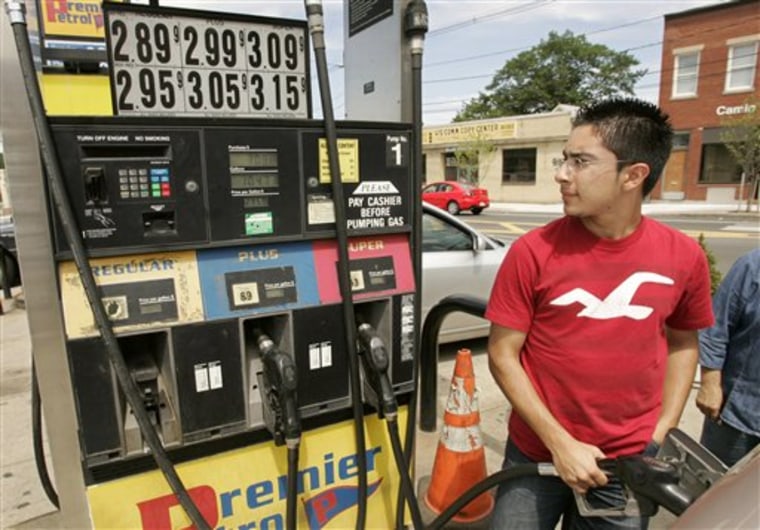The biggest jump in gasoline prices in six months helped push inflation at the wholesale level higher in May, although inflation outside of energy remained well-behaved.
Wholesale prices rose by 0.9 percent last month, worse than the 0.6 percent advance analysts expected, the Labor Department reported Thursday. The price surge was led by a 10.2 percent jump in gasoline prices, the biggest one-month increase since last November.
However, food prices declined for the first time in seven months and, outside the volatile food and energy sectors, core inflation posted a moderate 0.2 percent increase. That was slightly better than the 0.3 percent advance analysts had anticipated.
Wall Street surged on the inflation report as investors were encouraged by the modest increase in core inflation. The Dow Jones industrial average rose 71.37 points to close at 13,553.72. The Dow has risen 258 points over the past two sessions, its best two-day gain since last July.
Analysts believe the Federal Reserve, which last moved rates a year ago, will remain on hold for the rest of the year. While that puts off any possible rate cuts, it also means the Fed won’t be raising rates either. Fed Chairman Ben Bernanke and other officials were expected to continue declaring they are more worried about the possibility of inflation than that economic growth could stall out.
“Given the tight labor market and peppier economy, the Fed will continue to worry that this favorable trend could come to an end,” said Sal Guatieri, senior economist at BMO Capital Markets.
In other economic news, the Labor Department reported that claims for unemployment benefits totaled 311,000 last week, unchanged from the previous week. That was a better outcome than the small rise in claims analysts had expected and supported the view that the job market has held up remarkably well in the face of a yearlong economic slowdown.
Overall growth, as measured by the gross domestic product, slowed to a barely discernible rate of 0.6 percent in the first three months of this year, the weakest showing in more than four years.
Analysts believe the economy is now rebounding despite a longer-than-expected slump in the housing market. Many forecasters believe growth in the current April-June quarter will rebound to a more respectable reading of around 3 percent.
The 0.9 percent rise in the department’s Producer Price Index marked the fourth consecutive hefty increase in this gauge, which measures cost pressures before they reach the consumer. Wholesale prices had risen by 0.7 percent in April and were up by 1 percent in March and 1.3 percent in February.
However, the price pressures have been largely contained to the energy sector and there have been encouraging signs that this year’s surge — which pushed gasoline pump prices to record highs — is beginning to abate.
For May, energy prices jumped by 4.1 percent, reflecting big increases in gasoline and liquefied petroleum gas. The government will report Friday on consumer prices, with expectations that the overall figure will be up 0.7 percent because of higher energy costs but that core prices will rise by a more moderate 0.2 percent.
There are also hopes that gasoline prices have hit their peak. The latest Lundberg survey found the national average for gasoline dropped by 7 cents in the last three weeks, with a gallon of regular gasoline falling to $3.11, down from $3.18 in the last survey May 18.
Wholesale food prices in May edged down 0.2 percent, the first decline since a 0.4 percent drop last October. The May drop reflected big decreases in the price of lettuce, tomatoes, cauliflower and other vegetables.
Outside of food and energy, the 0.2 percent rise in core inflation followed two months when core prices showed no change at all. In the core categories, new car prices fell 0.2 percent in May after an even bigger 1 percent drop in April. Computer prices were down 2 percent last month.
